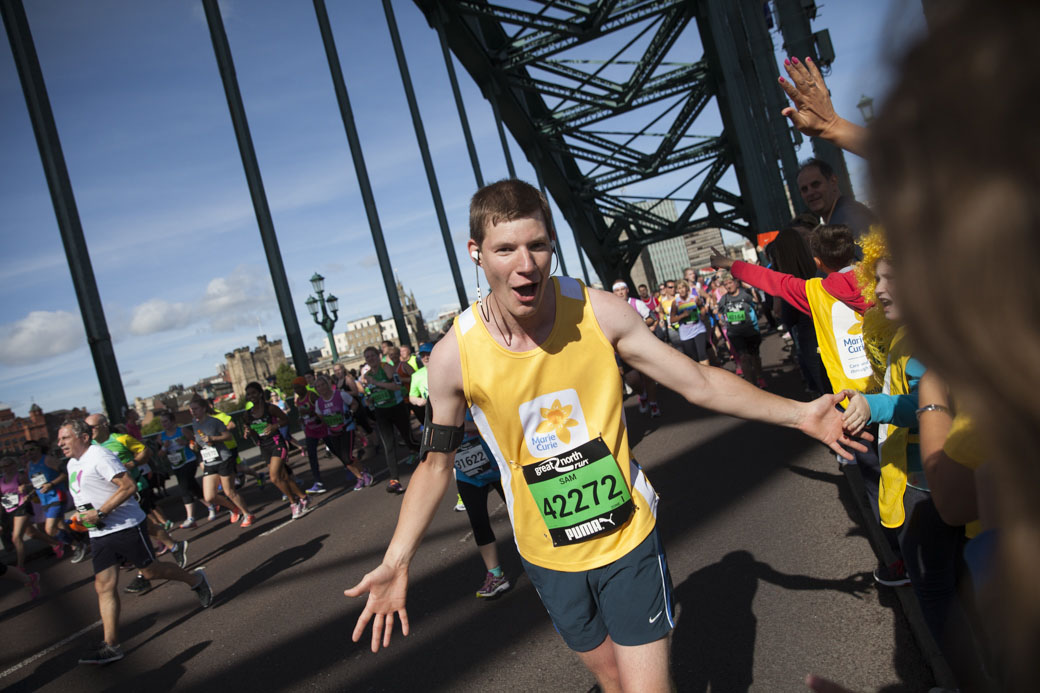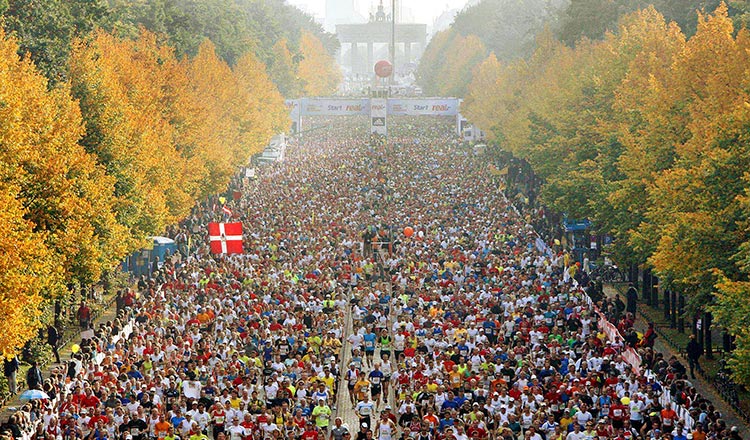Run stronger
Doing key exercises in the gym or at home will make you a stronger, faster runner.

When you sign up for a running event you’d be forgiven for thinking that your preparation should consist of running, running and, well, more running. And while it is true that the bulk of your training sessions will involve putting one foot in front of the other, you’d be well advised to include some resistance training sessions either in a gym or at home.
The aim of these sessions isn’t to increase the size of your muscles, it’s to improve the strength and stability of key muscle groups so that you run more efficiently and reduce your risk of injury.
‘Bad movement patterns and muscular imbalances can cause damage to ankles, knees and hips and that’s why all our runners lift, jump and squat,’ says David Arnott, a strength and conditioning coach and the co-founder of London personal training studio Evolve 353.
‘We use resistance training with our clients to improve their movement patterns and to make them more efficient with how they use their energy. Increased running efficiency will allow you to use less energy per stride so you can run for longer on the same energy. Power to weight ratio is also important - running up hill with weak legs is hard so having powerful springy legs will give you the speed to improve your times.’
Do Arnott’s exercises as described below to support your regular running sessions.
At home
You can do the following moves at home without any equipment. You can also do them as part of your routine in the gym and add extra resistance as you get stronger. Aim to do them once or twice a week on non-running days.
1. Hip clam
Do 3 sets of 15-20 reps with 60 seconds rest between sets.
Why do it: ‘This move strengthens your glue (bum) muscles and will prevent the knees from caving in during your runs which will reduce the chances of developing long term knee injuries,’ says Arnott.
How to do it: Lie on your side with your knees slightly bent and one leg resting on top of the other. Raise the knee on your top leg towards the ceiling to create space between your legs, pause then lower back to the start. Once you have completed all of the reps on one side, swap sides.
2. Squat
Do 3 sets of 12-15 reps with 2 minutes rest between sets.
Why do it: ‘This important lower body exercise will increase leg strength so that each stride will become easier,’ says Arnott. You can also do this move while holding a pair of dumbbells by your sides in each hand or with a barbell across your back in the gym.
How to do it: From standing, simultaneously bend at the knees and the hips to lower yourself towards the floor. Keeping your weight on your heels and mid-foot (not on your toes) and keeping your chest up, make sure your knees stay in line with your toes as you lower. Aim to lower until your thighs are parallel to the floor, or go as deep as you can without compromising your form, then push back up to the start.
3. Multi-planar lunges
Do 3 sets of 15 reps (each leg) with 2 minutes rest between sets.
Why do it: ‘These will give you strength in different positions,’ says Arnott. ‘You want to be strong as you turn, not just on the straights.’ You can also do this move while holding a pair of dumbbells by your sides.
How to do it: From standing, take a stride forwards and simultaneously bend both knees until they are bent at 90 degrees, keeping your front knee in line with your front toes. Push through your front foot to return to the start.
Next, take a stride out to the side with both feet facing forwards, bending your leading leg and keeping your trailing leg straight. Push back to the start then take a stride backwards, simultaneously bending both knees until they are bent at 90 degrees, keeping your front knee in line with your front toes.
At the gym
If you have access to a gym, do the following moves once or twice a week on non-running days.
1. Barbell deadlift
Do 3 sets of 12-15 reps with 2 minutes rest between sets.
Why do it: ‘This is a great full body exercise for the muscles on the back of your body - the big muscles that will be supporting your hips and back during the run,’ says Arnott.
How to do it: Stand with a barbell in front of you with your feet shoulder width apart. Grip the bar with your hands just wider then shoulder with apart with your knees bent, your chest up and your shoulders over the bar.
Lift the bar off the floor by straightening your knees without changing the angle of your torso and make sure the bar stays as close to your shins as possible. Once the bar passes knee height, bring your torso to an upright position then reverse the move under control to the start and repeat.
2. Box jump
Do 3 sets of 8 reps with 2 minutes between sets.
Why do it: ‘Doing this move improves power through the hips and will help your leg drive up those hills,’ says Arnott.
How to do it: Stand with a knee-height box in front of you. Drop into a quarter-squat, swing your arms back then explode upwards to jump onto the box. Bend your knees as you land to absorb the force, step down and repeat. If you are feeling fatigued or you notice the quality of your jumps diminishing, stop the drill.
3. Kettlebell swing
Do 3 sets of 15 reps with 60 seconds between sets.
Why do it: ‘This is a great hamstring and hip exercise and will improve the basic mechanics for running,’ says Arnott.
How to do it: Hold a kettlebell in both hands between your legs. Hinge at the hips to send the kettlebell back between your legs, bending only slightly at the knees. Push your hips forwards to straighten up and use the momentum of the hip drive to send the kettlebell up to shoulder height.
The kettlebell swing should be powered by your hip drive rather than being pulled up by your arms. Let the kettlebell fall back down in a smooth arc to go back between your legs and repeat the move.
David Arnott is a strength and conditioning coach and the co-founder of personal training studio Evolve 353. For more information, visit evolve353.com
